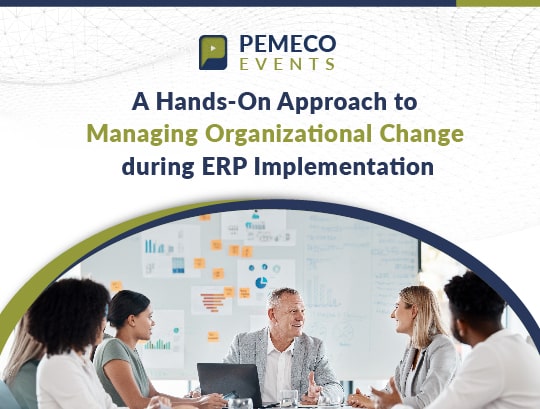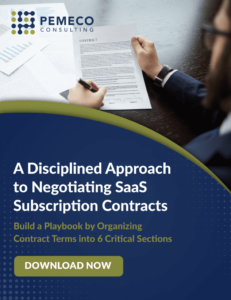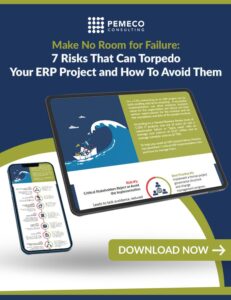
From Planning to Execution – The M&A Integration Timeline
By Jonathan Gross | April 16 2024
Most M&A activities are rooted in the expectation that inherent synergies between two companies will deliver value that exceeds that of the two separate entities. However, to deliver on that promised value, the combined organizations must iron out their differences and learn how to function as a single organization.

The corporate landscape is littered with high-profile M&A failures. In every case, underperformance is attributed to pre-existing incompatibilities and a failure to proactively address those fundamental differences. Very often, the problem is rooted in corporate culture. That typically manifests itself in the form of disagreements over people, processes, and technology. The us/them paradigm takes hold as an organization attempts to reconcile two distinct bodies of practice into a single, coherent whole.
Success hinges on a clear plan for M&A integration, including a timeline for aligning people, processes, and technology. According to McKinsey, companies that excel at post-merger integration outperform others by 6% to 12%. In this article, we will lay out a roadmap for M&A integration success.
Advance Preparation
As with many other projects, a successful post-merger integration (PMI) begins with a clear plan outlining key priorities, timelines, costs, and risks. Project sponsors should establish a governance framework that includes a steering committee and well-defined teams tasked with addressing specific components of the integration, such as human resources, branding, technology infrastructure, and logistics.
Software applications like ERP and CRM deserve special attention, with dedicated project teams to plan and implement the integration. ERP provides the core foundation for many business processes within an organization. To unify around a single ERP platform, you need a team capable of understanding the current business processes for both predecessor companies and then defining a proposed future state that aligns all of that within a single system.
It would be hard to overstate the importance of ERP integration. That project will impact virtually every corner of your newly combined organization, so it requires the same complex combination of high-value employees who thoroughly understand people, processes, and technology. Make this a top priority.
Post-Acquisition Assessment & Planning
Immediately following the deal closing, perform a rigorous post-acquisition assessment. Review and validate the assumptions that emerged from due diligence. Assess key barriers to integration and prioritize issues that require resolution.
Assess your technology stack for scalability, reliability, compatibility, and security. Identify critical compliance needs, particularly concerning data privacy and cybersecurity. This is especially important if the merger expands the organization’s geographic coverage. For instance, if a US-based company acquires a European firm, its emphasis on GDPR compliance may need to step up a notch or two.
Take a holistic look at corporate and organizational structures, business processes, data and information architecture and governance, and technology infrastructure. Lay out the key changes, the benefits that will accrue, and the anticipated costs.
Lay out a series of high-level milestones, using 30-day, 60-day, 100-day, and 12-month periods. Set achievable goals for each of those markers, keeping the organizational maturity of both organizations in mind.
Stakeholder Engagement
Be very proactive about communicating with stakeholders. Every large-scale change initiative triggers concerns among some employees and other affected parties. When two companies come together, the scope of change is amplified considerably. So too is the angst associated with that change.
Develop a thorough change management plan for the PMI project, and sub-projects such as ERP integration. This article outlines a strategy for communication and training, risk management, skills gap analysis, and other factors that are critical to addressing the human elements of change. Identify key stakeholders, channels of communication, and a cadence for reaching out to each primary stakeholder group.
Do not underestimate the importance of change management, and do not relegate it to secondary status. The best, most efficient systems in the world will fail to deliver positive results if the people responsible for using them are not fully aligned with the plan, the implementation, and the outcome.
Reinforce the Vision
As you move forward with the post-merger integration, revisit your high-level vision frequently. Although some M&A failures arise from a failure to identify the right synergies, many more result from an inadequate commitment to following through on actual synergies that show real promise.
Revisit the initial reasons for the merger early and often. Develop a compelling vision for the combined company that leverages those synergies and renews the organization’s commitment to making it happen. This task overlaps with change management but deserves special mention because it speaks to the overarching mission statement that drives the post-merger acquisition.
M&A Integration Follow Through
At the one-year milestone, most organizations will have achieved a “new normal” in which the organizations should (at least in theory) operate as one. The lines between two distinct company cultures will have blurred and may not even be evident to new hires.
At this point, there are usually some vestiges left over from one or both previous organizations. These typically involve processes or departments that previously operated effectively as independent units and lack the size and scope to require immediate downsizing or streamlining. Nevertheless, the opportunity remains to gain efficiencies by overhauling those systems and teams. Follow-through ensures that the organization continues its journey along the path to optimization.
Post-merger integration is critical and can make or break high-stakes investments. Consequently, PMI can also make or break careers. Since 1978, Pemeco has been helping companies with strategic consulting, change management, and M&A integration. We help organizations select, negotiate, and implement ERP systems successfully.
Grounded in a bottoms-up analysis of operations and IT, our M&A Post-Acquisition Services help companies assess the operational and technological maturity and risks of their target acquisition, then develop project plans, budget, and ROI to modernize the combined business. Want to learn more? Contact us today.
The Elusive Quest for Standardization
All too often, standardization often turns out to be elusive, especially for companies that grow through acquisition. By standardizing around a single ERP platform, for example, leaders assume they can lay a foundation for a common chart of accounts, order-to-cash processes, aligned fiscal periods, similar reporting standards and formats, and many others.
The parent company decides to roll out standardized systems, with a common ERP platform as the foundation. They start with a pilot implementation at a single subsidiary, and things go reasonably well. Next, they apply that same standard to a new company, only to discover the nuances in the order entry process dictate something a bit different.
More exceptions begin to emerge. Multinational organizations face another layer of challenges arising from local or regional reporting requirements, tax regulations, and accounting standards. By the time the parent company implements its “standard” ERP system at a third, fourth, and fifth subsidiary, the objective of standardizing processes seems to have fallen apart altogether.
The ERP Standardization Solution
There is a path forward for organizations that want to achieve a reasonable level of standardization, though. It requires a keen awareness of the obstacles described above, as well as a commitment to a global design and implementation process that balances uniformity with the need to address the unique business requirements of each subsidiary or division.
Governance: Any successful ERP standardization initiative begins with global design and a solid governance framework. It ensures an effective plan that maximizes opportunities for streamlining systems while allowing for some deviation from the standard. This approach demands a disciplined change control process to mitigate such deviations as the project progresses from company to company, site to site, and through subsequent optimization and continuous improvement phases.
Coherent project teams: Foster continuity and consistency within the core project team such that institutional knowledge and experience carry forward from one implementation to the next. It ensures that the rationale for design decisions is clearly understood and communicated to stakeholders during each wave of new ERP rollouts. Knowing the kinds of deviations that have emerged in prior implementations, the team will be in a stronger position to balance standardization with company-specific business requirements.
Global design: Involve key users from key divisions and departments to capture the critical requirements from all sites under consideration. It provides a baseline for delivering on a broad set of functional needs based on present conditions and anticipated near-term changes. Although it’s impossible to anticipate all future requirements, especially concerning mergers & acquisitions, it is still worth taking an inventory and building a global design around those needs. Throughout this process, bring in users at strategic checkpoints to validate the design as it evolves.
Implementation of the global design: As each implementation progresses, bring in key users from other divisions or locations to review and validate the process design, support the rationale for standardization, and confirm the need for deviations from the standard. This group can also contribute to the training and education process and support change management efforts for the implementation. Given their experience with global ERP design, these key users can also offer hands-on support during the most critical phases of the rollout.
Expert Teams, Change Management, and Institutional Memory
As we have pointed out elsewhere, it’s critically important to acknowledge the human element as part of any ERP implementation process. When it comes to a standardized global design, change management is of paramount importance. Resistance to change is normal, but when an ERP rollout is accompanied by a perception of top-down control from faraway corporate bigwigs, the push-back tends to be even greater.
By assembling and maintaining a coherent core project team, the parent company can lay a foundation for a smooth, repeatable approach that legitimately balances standardization with real-world business requirements. As the organization proceeds with new waves of ERP implementations, it can develop a critical mass of subject matter experts across existing divisions and sites. That leads to an increasingly larger team that can transfer their institutional knowledge to new sites, offering support for parallel deployments and accelerating program completion.
Do not underestimate the need for disciplined governance throughout this process. Inevitably, teams will encounter resistance and need to make some difficult decisions along the way. As with any large-scale organizational change, you will encounter push-back as you seek to achieve synergies across multiple business units. With a balanced approach, though, complex organizations can achieve greater efficiencies and more visibility across their entire enterprise.
Guides & Tools


